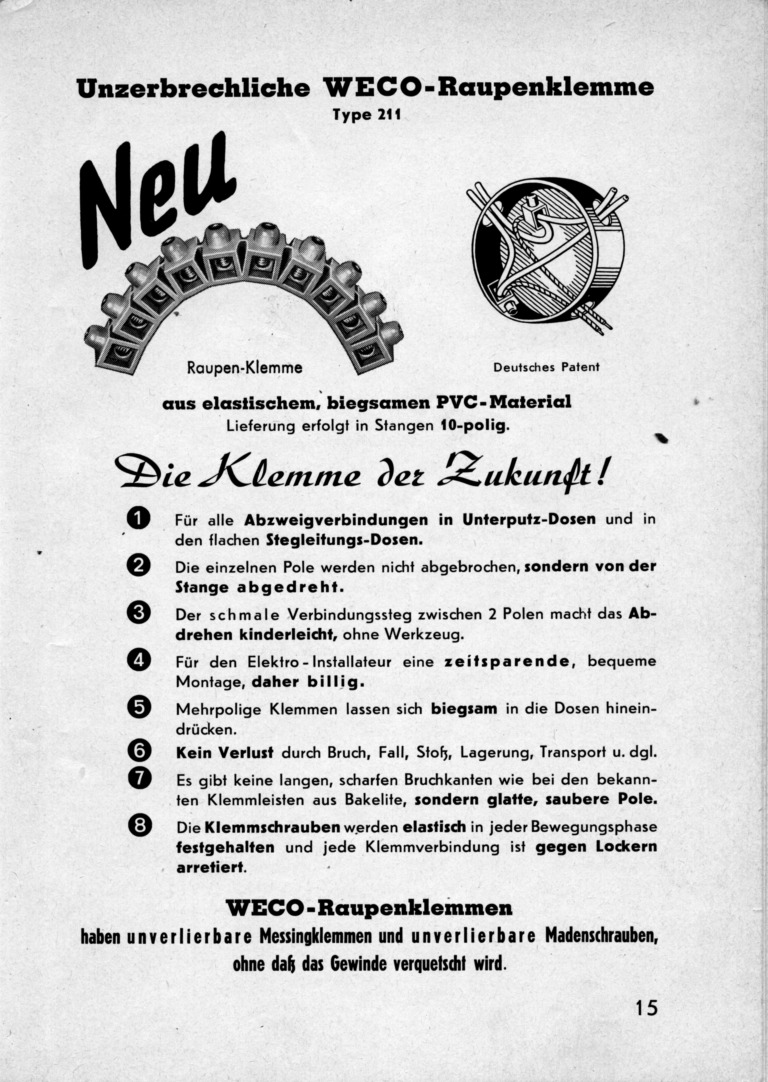WECO has adapted to the economic boom
The fifties were the beginning of the Baby Boom, a period full of optimism, when life was simple, jobs were plentiful, and a record number of babies were born. Countries experienced strong economic growth while consumer demand fueled the economy. The Baby Boom triggered a boom in housing, consumption, and workforce. The industry began to build and expand production facilities to meet the seemingly unquenchable demand with investments in new and modern machinery.

As product demand increased, factories needed to adapt and automate their routine and repetitive operations. WECO was not immune to this same phenomenon. Early on, most production was labor-intensive, and all operations were manual. In the early 1950s, new machines and equipment found their way into the shop floor, although these were purely mechanical, WECO automated the cutting process on its new circular lathe. This simple “programming” consisted of several asymmetrical metal control discs mounted one behind the other. The rotation of the discs-controlled tool arms, which then produced a finished metal part, thereby allowing WECO to increase its production.

Regardless of the increase in the number of machines in the factories, there was still one worker per machine maintaining it and feeding raw material. As the amount of equipment increased, technology advanced and allowed more machines to work on a semi-independent basis. This initial level of mechanization opened a new market segment for WECO. The main products manufactured during this period were used for power supply to machines, power distribution and assembly lines. The Lüsterklemmen series introduce earlier continued to increase in popularity as new variations in plastics and pole sizes which solidified WECO’s position in the factory automation market. This series was later re-branded as the Series 300 or Euro Style connector.
The manufacturing segment has undergone huge changes since the beginning of the industrial revolution. Technological improvements have gone from simple mechanization to computer numerically controlled (CNC) processes and now to “cybernetic” machines. Today, large machines can independently produce thousands of parts according to pre-made programs. All this could not be achieved unless electrical power was efficiently distributed to machines, with control panels that enabled communication. WECO’s products keep playing a major role in power distribution and interconnection of production equipment. Products designed and used in the 1950s are still in demand and in use today, attesting to the durability of WECO’s products.
In addition to the Euro Style Series 300, WECO developed several new connection solutions including the PCB terminal. Originally used on printed circuit boards for machine control systems, these connectors were initially intended for voltage distribution, but their reliability and easy use made them equally adaptable for signal connections.

The fourth industrial revolution (or Industry 4.0), gave birth to the Industrial Internet of Things (IIoT) – increasing connectivity and improving efficiency, all through data. The need for innovative connection solutions has blossomed as control panels have shrunk in size, resulting in greater power distribution over a smaller, densely populated PCB. As more sensors are used to monitor plant equipment, more signals need to be processed from a single power control board; the requirement for space-saving solutions becomes even more essential.
WECO plays a role with its reliable SMD products and patented SMarTconn connectors where the products can be soldered to both sides of the PCB. WECO has proven over the decades that its products are user-friendly and adaptable to the requirements of modern factory automation. Our vision is to become the first choice in tailored electrical connection solutions for industrial applications worldwide.
Next week you will learn how WECO has successfully innovated communication and met the challenges of the next decade. Stay tuned.








